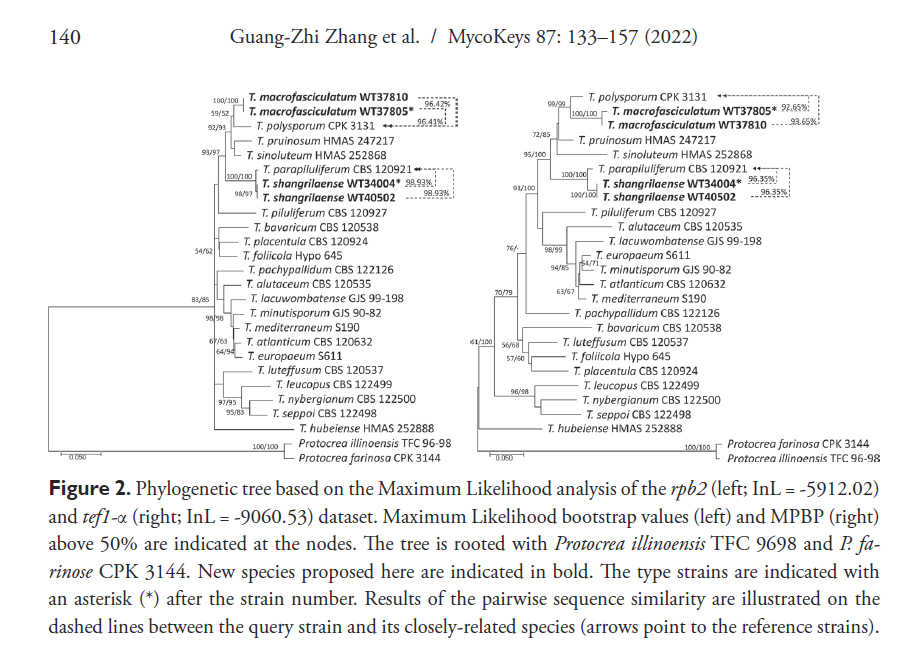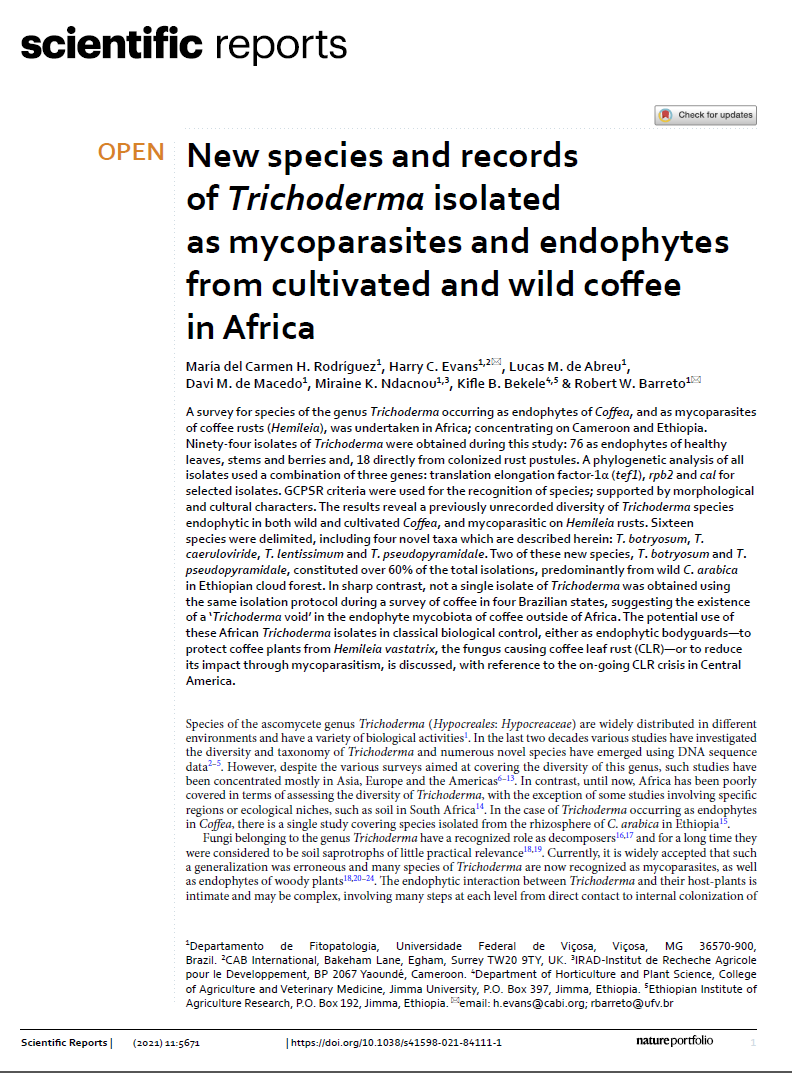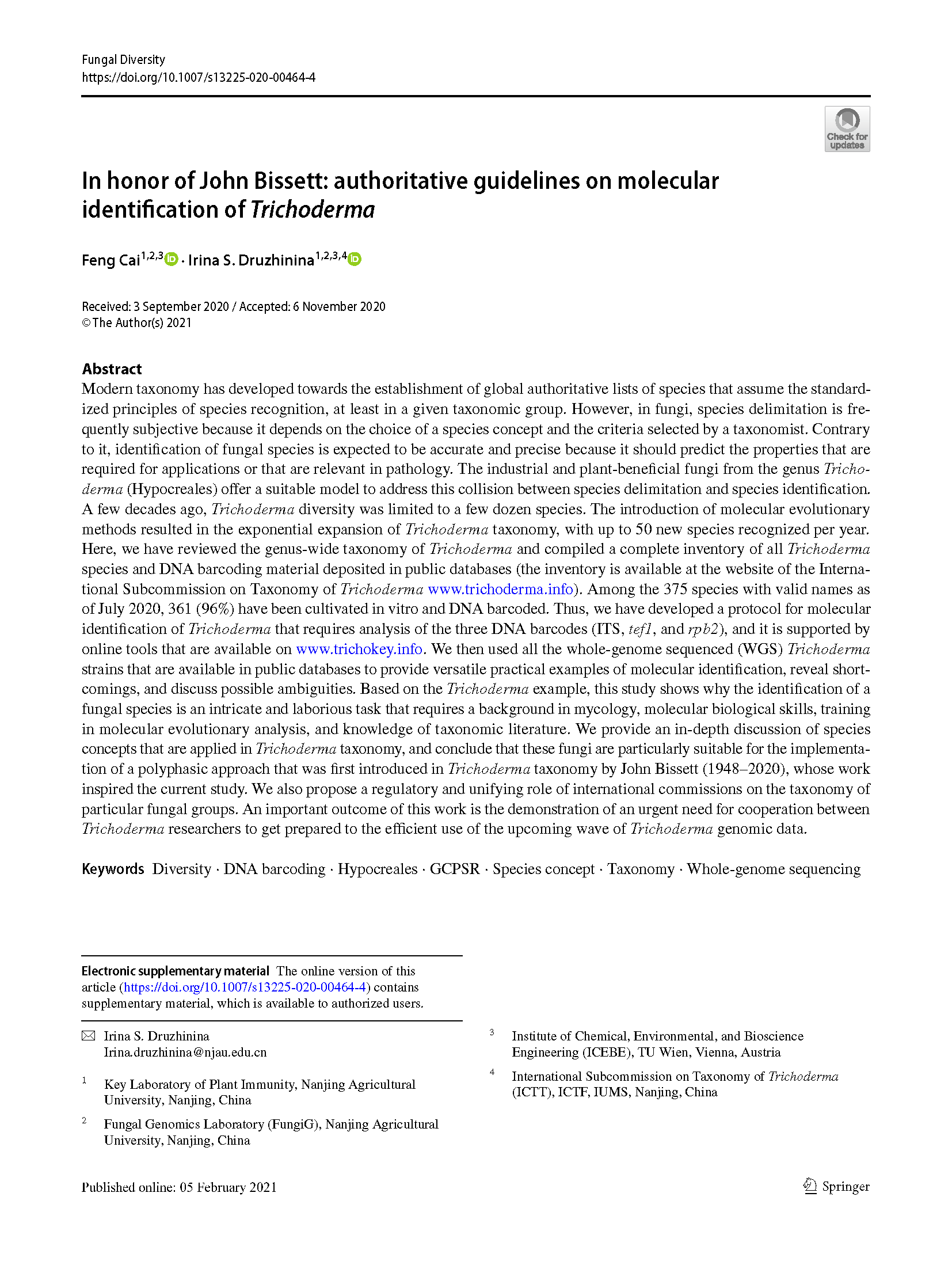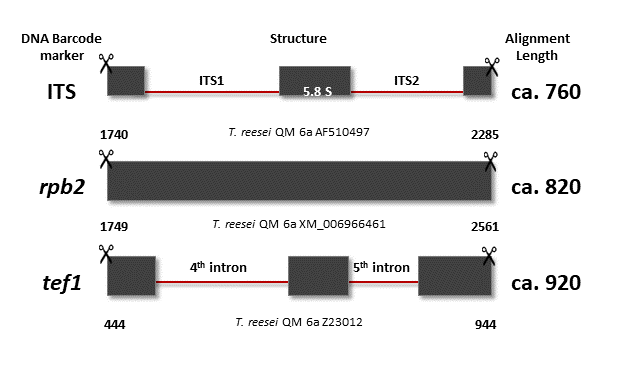Trichoderma hailarense G.Z. Zhang, sp. nov.; Trichoderma macrofasciculatum G.Z. Zhang, sp. nov.; Trichoderma nordicum G.Z. Zhang, sp. nov.; Trichoderma shangrilaense G.Z. Zhang, sp. nov.; Trichoderma vadicola G.Z. Zhang,
sp. nov.
Zhang G-Z, Yang H-T, Zhang X-J, Zhou F-Y, Wu X-Q, Xie X-Y, Zhao X-Y, Zhou H-Z (2022) Five new species of Trichoderma from moist soils in China. MycoKeys 87: 133–157. https://doi.org/10.3897/mycokeys.87.76085
Five new species of Trichoderma from moist soils in China

Trichoderma isolates were collected from moist soils near a water source in different areas of China. ITS sequences were submitted to MIST (Multiloci Identification System for Trichoderma) and meets the Trichoderma [ITS76] standard. Combined analyses of phylogenetic analyses of both phylograms (tef1-α and rpb2) and morphological characteristics, revealed five new species of Trichoderma, namely Trichoderma hailarense, T. macrofasciculatum, T. nordicum, T. shangrilaense, and T. vadicola. Phylogenetic analyses showed T. macrofasciculatum and T. shangrilaense belong to the Polysporum clade, T. hailarense, while T. nordicum and T. vadicola belong to the Viride clade. Each new taxon formed a distinct clade in phylogenetic analysis and has unique sequences of tef1 and rpb2 that meet the Trichoderma new species standard. The conidiation of T. macrofasciculatum typically appeared in white pustules in concentric rings on PDA or MEA and its conidia had one or few distinctly verrucose. Conidiophores of T. shangrilaense are short and rarely branched, phialides usually curved and irregularly disposed of. The aerial mycelium of T. hailarense and T. vadicola formed strands to the floccose mat, conidiation tardy and scattered in tufts, conidiophores repeatedly branching in dendriform structure. The phialides of T.nordicum lageniform are curved on PDA and its conidia are globose to obovoidal and large.
Keywords: Hypocreales, phylogenetic analysis, soil fungi, Sordariomycetes, taxonomy




